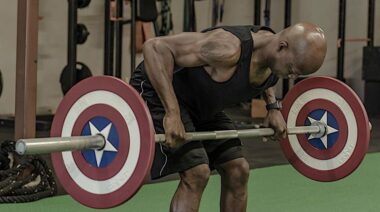Many coaches tout different rep schemes for building strength and muscle, but it can be tough to determine which one is really the most efficient. Recently, in a Journal of Strength and Conditioning Research study, researchers investigated what would happen if they factored out one of the most critical differences in many programs: volume-load.
The study refers sometimes to volume, but the term is not always used consistently. Elsewhere in the study, the same value is called, more appropriately, volume-load. Sometimes people refer to this as work, or work load. This is the number of total reps for a given exercise, multiplied by the weight used.
Two programs were compared. One was the type a normal gym goer would equate to hypertrophy development. It involved three sets of ten reps with a ninety-second rest. The other was more of a strength and power program that consisted of seven sets of three, with a longer rest of three minutes. The programs went on for eight weeks. Bicep size, bench press, and squat strength were tested before and after.
The volume-load was the same for each workout. This means that because the strength plan had fewer reps per exercise, it used a heavier load to keep the work even. Each session consisted of one upper body press, one upper body pull, and a quad-dominant leg exercise for the strength group.
The hypertrophy group used the same exercises, but instead did a split routine. The pressing exercises were grouped on the same day, the pulling exercises on another day, and so on. The authors noted the particular exercises, such as the bench press, were chosen due to their frequent inclusion in both hypertrophy and power training routines.
One question that always crops up in a study like this is the experience level of the participants. In this case, the average lifter was reportedly drug-free, uninjured, and had been lifting at least three times per week for an average of over four years. The study’s minimum requirements ensured that the lifters were experienced. Any difference in results couldn’t be considered beginner’s gains.
When both beginner’s gains and volume-load were factored out of the study, the researchers found interesting results. Muscle size was developed by both the hypertrophy program and the strength program to the same degree. However, the strength program was better at developing upper body strength and trended toward being better for lower body strength as well.
The researchers indicated that their results were in agreement with other volume-load equated studies, and not in agreement with studies that had volume-load as a variable. The comparison indicates that volume and volume-load are critical variables for increasing muscle size up to a point.
By contrast, the strength routine in this study used muscular failure to end each set, a practice sometimes frowned on in powerlifting circles. Not training to failure may allow for a strength training protocol to have higher-than-normal volume-load and would thus be superior in the long run for strength and size.
Ultimately, it seems that for the average athletic individual looking to get the most bang for their buck in the gym, a strength-oriented program is the best way to go. If you have the time for the extra sets, a hypertrophy-style plan might work better for size, but only if you don’t overdo it.
References:
1. Brad Schoenfeld, et. al., “Effects of different volume-equated resistance training loading strategies on muscular adaptations in well-trained men,” Journal of Strength and Conditioning Research, DOI: 10.1519/JSC.0000000000000480
Photo courtesy of Shutterstock.






